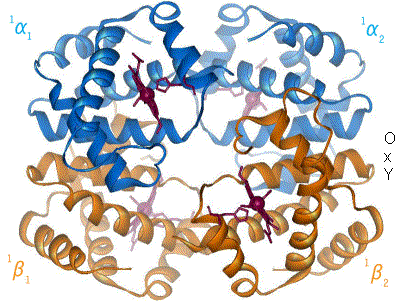Of course the soft parts are almost entirely preserved as imprints or colourful smudges, where salts have replaced tissues. Apart from mammoth fossils, due to their incredibly young geological age and ice preservation, it seemed almost impossible that the molecules which made up the soft tissue could have been preserved. Yet in the late 1990s Dr Mary Schweitzer from Utah State University found the impossible: non-fossilised matter from the femur of a Tyrannosaurus specimen.
 |
| it was from this 68 million year old Tyrannosaurus rex femur that Dr Mary Schweitzer extracted intact collagen proteins |
Schweitzer and a team of researchers working on organic matter in fossils noticed that iron particles nearly always cropped up in their samples. 'Iron is necessary for survival, but it's also highly reactive and destructive in living tissues, which is why our bodies have proteins that transport iron molecules to where they are needed but protect us from unwanted reactions at the same time. When we die, that protective mechanism breaks down and the iron is turned loose on our tissues and that destructive process can act in much the same way formaldehyde does to preserve the tissues and proteins.'
 |
| The purple structures are molecules of the iron-containing pigment called haem. The overall image is of the protein haemoglobin |
Half were placed in water, the other in haemoglobin. The former degraded in less than a week, the latter have survived. What is more, the iron itself may be part of the reason why it took so long for palaeontologists to find soft organic matter in fossils. When Schweitzer and her team removed the iron from soft tissues from T. rex and Brachyolophosaurus specimens, they reacted much more strongly to protein-detecting antibodies, suggesting that the iron was somehow chemically masking their presence.
'We know that iron is always present in large quantities when we find well-preserved fossils, and we have found original vascular tissues within the bones of these animals, which would be a very hemoglobin-rich environment after they died,' Schweitzer said. 'We also know that iron hinders just about every technique we have to detect proteins. So iron looks like it may be both the mechanism for preservation and the reason why we've had problems finding and analyzing proteins that are preserved.'
 |
| Is it possible that the metals within this fossil may be masking something altogether more organic? |
Palaeontology has become wider- ranging in its techniques. Previously, fossils were all we had to work with. Now we can pick apart the remains of extinct organisms to reach to the very proteins which made them up. We have also begun to recognise the sheer power of the genome to look back in time through molecules. Palaeontology moves towards new platforms, whilst new discoveries are certain to arise and surprise us.